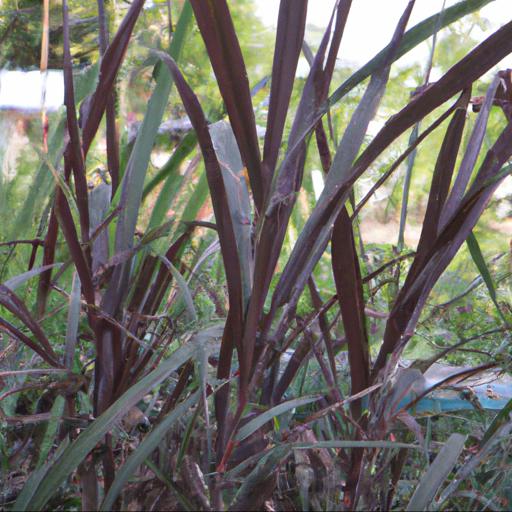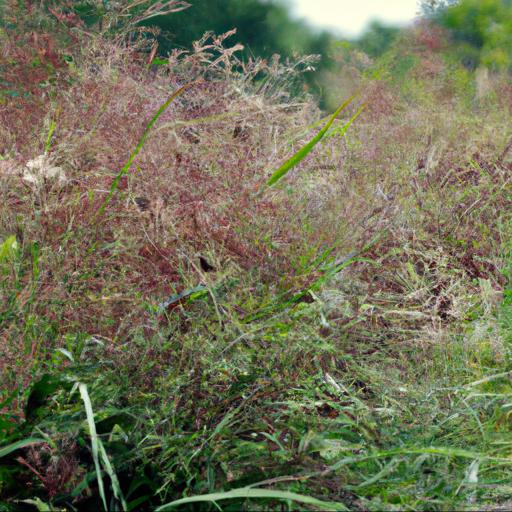Welcome to the blog about Panicum virgatum ‘Shenandoah’, a beautiful ornamental grass that is perfect for any garden. This native grass is native to the eastern United States and is an excellent choice for a variety of landscaping projects. It is easy to grow and care for and adds a stunning visual appeal to any landscape.
We will discuss the characteristics of this grass, how to plant and care for it, and the many benefits it provides in the garden. We hope you enjoy learning about Panicum virgatum ‘Shenandoah’ and find it useful when planning your own landscaping projects.
Benefits of panicum virgatum shenandoah

Panicum virgatum Shenandoah is an ornamental grass that is fast growing, low-maintenance and eye-catching. It is known for its stunning fall foliage and graceful, arching foliage. This makes it a great choice for any garden, from a small backyard to a large public park.
Shenandoah is a versatile grass, with the ability to flourish in a range of climatic conditions. It can tolerate both dry and wet environments, and can also withstand occasional freezing and thawing.
This means that gardeners who live in both cool and warm climates can rely on Panicum virgatum Shenandoah to provide reliable interest throughout the year. In addition, Panicum virgatum Shenandoah produces a range of ornamental features including seed heads, purple-tinged foliage and attractive fall coloring.
This makes it a great choice for those looking to add a seasonal touch to their garden. The grass is also beneficial to butterfly populations and birds, providing food and shelter throughout the year. Beyond its ornamental qualities, Panicum virgatum Shenandoah is an excellent choice for landscaping projects.
The grass is highly tolerant and can be easily laid along driveways and borders. It also creates a thick, drought tolerant turf that makes it a great option for homeowners looking to limit water usage. Overall, Panicum virgatum Shenandoah is an ideal choice for a wide range of gardens, from small backyards to large public parks.
Not only does it provide reliable interest, it can also enhance the landscape with its vibrant foliage and attract wildlife. With its quick growth, low maintenance and hardy nature, this ornamental grass is sure to create a show-stopping display.
How to plant panicum virgatum shenandoah

When people consider plants for their gardens, Panicum virgatum Shenandoah should be at the top of the list. This stunning grass is a must-have specimen for any dedicated gardener and can transform any outdoor space with its cascading ornamental foliage. Panicum virgatum Shenandoah is a clump-forming grass with a distinctive habit that makes it an eye-catching addition to the garden.
In late summer and autumn, the arching stems are topped with handsome, fluffy, pink-tinged flower heads, adding to its ornamental appeal. The foliage is also attractive, forming arched masses of blue-green blades, with a very fine texture.
This adaptable grass will create an impressive display of foliage and flowers in any garden. Planting Panicum virgatum Shenandoah is easy and can be done in spring or autumn, in any moist but well-drained soil. It prefers full sun or partial shade, and is tolerant of drier conditions, although it will benefit from supplemental irrigation during periods of drought.
This grass is tough and resilient, so it is a great choice for those who want something that’s easy to maintain and looks great year round. It can be used as a statement plant in a modern garden, or as a low maintenance alternative to a hedge.
Once established, it will require very little attention and will be an asset to any garden for years to come.
Care and maintenance of panicum virgatum shenandoah

Panicum Virgatum Shenandoah – Caring For This Striking Ornamental GrassPanicum virgatum Shenandoah, commonly known as Panic grass, is an ornamental grass native to the United States. With its graceful flower spikes and vivid red foliage, it makes a stunning addition to landscapes and gardens.
Caring for this creeping grass is easy, but there are a few key things to keep in mind if you want your Panic grass to reach its full potential. The first part of caring for Panicum Virgatum Shenandoah is to plant it correctly. As it is a creeping grass, it needs plenty of room to grow.
To keep the grass contained in small spaces, it is advisable to install barriers such as concrete edging to help keep it contained. Once planted, make sure to water the soil well to ensure it gets the moisture it needs.
Next, it’s important to prune your Panic grass to help keep it looking its best. Pruning should be done when the foliage appears to be stunted or thin. When pruning, be sure to remove any dead or dried leaves.
This will encourage your Panic grass to grow healthy foliage. Finally, add a layer of organic mulch like pine needles or wood chips to the area surrounding your Panic grass.
This will help to keep the soil moist, insulate the soil from harsh temperatures, suppress weed growth and make the grass look brighter. With the right kind of care, Panicum Virgatum Shenandoah can quickly become a favorite feature of your garden. From its striking flower spikes to its beautiful foliage, this ornamental grass is a great choice for incorporating texture and movement into your landscape.
Common problems with panicum virgatum shenandoah
Panicum virgatum shenandoah, the “Purple Switch Grass,” is a popular ornamental grass that adds color to gardens. However, it is not without its problems. Knowing how to prevent, identify and solve common issues with this variety of grass can ensure its health and beauty.
When growing Panicum virgatum shenandoah, one of the most common problems is foliage browning and fading. This is usually caused by a lack of moisture and too much wind.
To prevent this, plant switch grass in an area that gets plenty of water and is well protected from the wind. It should also be given an inch of water each week to prevent dehydration.
Fertilizing the soil with an organic fertilizer and applying a layer of mulch around the base of the plants can also help prevent browning. Diseases can also wreak havoc on Panicum virgatum shenandoah. One of the most common diseases is rust, which is caused by a fungus.
Symptoms of this disease include yellow or orange spots on the leaves, and in some cases, the plants will lose their leaves. To protect against rust, make sure to maintain good air circulation and avoid planting in overcrowded areas. Additionally, avoid areas with damp conditions and apply a fungicide if you notice signs of infection.
One problem that particularly affects Panicum virgatum shenandoah is pests. Aphids, caterpillars and mites can all be attracted to this variety of grass, and these insects will feed on the foliage.
To reduce the chances of an outbreak, keep your grass thick and healthy. This will limit the areas of entry for pests. If an infestation does occur, applying an insecticidal soap or neem oil to the affected plants will help deal with the issue. Panicum virgatum shenandoah can be a beautiful addition to gardens, but to enjoy it to the fullest, it is important to know how to prevent and combat the common issues that arise. Making sure the grass is planted in the right conditions, keeping it healthy, and being vigilant for signs of disease and pests are the best ways to keep it looking beautiful.
Our video recommendation
Bottom Line
Shenandoah Switchgrass (Panicum virgatum ‘Shenandoah’) is a warm season grass that is native to North America. It is an ornamental grass that grows in a clump and can reach heights of up to 4 feet.
This grass is drought tolerant and can tolerate a range of soil types. It is an excellent choice for a variety of landscapes, and its red-purple color in the fall adds an extra touch of beauty.
FAQ
What are the characteristics of Panicum virgatum ‘Shenandoah’?
Panicum virgatum ‘Shenandoah’ is a warm season grass that is known for its attractive red foliage and its ability to tolerate drought and heat. It has a clumping growth habit and can reach heights of up to 4 feet. It is an excellent choice for ornamental gardens and can be used as a low-maintenance ground cover. It is also a great choice for erosion control.
What are the growing conditions for Panicum virgatum ‘Shenandoah’?
The growing conditions for Panicum virgatum ‘Shenandoah’ are full sun, moist to dry soil, and moderate fertility. It is tolerant of a wide range of soil types, including clay, loam, and sand. It is also tolerant of drought and heat.
How does Panicum virgatum ‘Shenandoah’ compare to other Panicum species?
Panicum virgatum ‘Shenandoah’ is a warm season grass that is known for its deep red color and its ability to tolerate drought and heat. It is a more compact variety than other Panicum species, making it a great choice for smaller gardens, and it has a more upright growth habit. It is also more tolerant of shade than other Panicum species, making it a great choice for areas with partial sun.
What are the benefits of planting Panicum virgatum ‘Shenandoah’?
The benefits of planting Panicum virgatum ‘Shenandoah’ include its ornamental value, drought tolerance, and low maintenance requirements. It is an attractive grass with red-purple foliage, and its drought tolerance makes it a great choice for dry climates. It is also low maintenance, requiring little pruning and no fertilization.
How can Panicum virgatum ‘Shenandoah’ be propagated?
Panicum virgatum ‘Shenandoah’ can be propagated through division or by seed.
What pests and diseases are associated with Panicum virgatum ‘Shenandoah’?
The most common pests and diseases associated with Panicum virgatum ‘Shenandoah’ are rust, powdery mildew, and stem borers.

